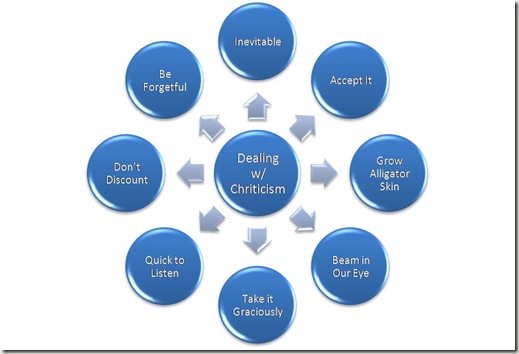Remarkable Times, Remarkable Blessings
/ Remarkable Times, Remarkable Blessings
Remarkable Times, Remarkable Blessings
by Zach Clark, Westminster Christian Academy, St. Louis
There is always a non-voodoo explanation.
From the TV series, Monk
In January of 2009, news began to spread that our nation and world truly was suffering the “worst economic crisis since the Great Depression”. The first week of January I was on the phone with Barrett Mosbacker, and I said to him, “I believe 2009 is going to be a remarkable year!” Barrett asked, “Remarkable in what way?” And I replied, “That’s what I like about that word…remarkable…I’m going to be right whether things get worse than anyone imagines or better than anyone dares hope for.”
2009 has been truly remarkable, and it’s not over yet. At the Christian school (grades 7-12) where I serve we faced the threats of major shifts in our region and world. From what I hear, it is possible that every Christian school in America faced some unique challenges this year, and many are struggling. At Westminster Christian Academy, we have been greatly encouraged by how God is leading us through these challenges. We are trying to determine what we are doing right (so we can keep doing it) and what we need to change or improve in the future (so we can stay strong).
I’m hopeful that some of my personal thoughts on the threats, strategies, blessings, and challenges that we have faced might be helpful to you.
We began the 2008-09 year having experienced the following in previous years:
- Ongoing enrollment growth.
- Ongoing income growth and record levels of giving.
- Constant programmatic improvements and reputation for increasing quality.
- The beginning of a capital campaign calling for transformational facility expansion, an entirely new campus.
- A projection for another year of enrollment growth in 2009-10.
Only six months later, by February, we realized reality had changed:
- A tuition increase was in place, although lower than in most recent years at 5%, it was still noticeable and felt by parents.
- Shifts in our inquiries for admissions data suggested that enrollment would most likely hold steady, and more re-enrolling families than ever before would be requesting financial aid for the first time.
- Unrestricted giving providing important dollars for the budget was the lowest in seven years. We projected our budget giving would be as much as 20% off of our budget.
- Resistance to making any long-term campaign commitments was overwhelming.
- A region-wide culture of fear and strong reactions was in place as we received constant advice on planning for such things as a possible 30% decrease in enrollment and 40-50% decreases in giving.
Another six months later, in August 2009, we started this school year with some amazing news of God’s provision through these difficult times.
- Record enrollment, surpassing even our pre-economic crisis projections.
- Record giving, and only a 10% drop in budget giving.
- No significant cuts to people or programs that impact students and families.
Above I’ve provided a very general and high-level view of some of the key economic health indicators of a Christian school, and how dramatically they shifted. Perhaps your circumstances were more challenging or less so.
What I want to focus on in this piece is how we responded and the steps that we took because I believe they are instructive and helpful. Even though some may say the “crisis is behind us,” the basic steps we’ve taken and how we continue to move forward are based on core values and principles of effectiveness that should be helpful and transformative at any time. Our school leadership continues to discuss these, analyze these, and seeks to understand what is happening.
The aforementioned shifts literally seemed to occur overnight and our heads were spinning. There is no reason to pretend that we all “knew what to do.” Every person I talked to at the beginning of 2009 seem dumbfounded and awed by the changes that were occurring. I kept hearing people say, “I’ve never seen anything like it.” But, we took a deep breath, we prayed, we asked a lot of people for advice, and we tried to be steady and strong as we outlined how we intended to move forward during these strange times.
Firstly, we recognized that this is an overwhelming difficult time for so many people. Husbands and wives are facing fears and tests of faith they have never experienced before. Fathers and mothers are enduring major adjustments to their careers and lifestyles. Children are dealing with questions and uncertainty unique to this moment in history.
Secondly, we began by asking the question found in Ezekiel 33: “How should we then live?” We are finding strength in a renewed sense of our dependence upon God as we remember His faithfulness.
Thirdly, we made a conscious decision not to go into what we called a “hunker-down” mode. We wanted to be willing to make tough decisions but be proactive and not simply reactive.
Fourthly, we committed to communicate in an encouraging but straightforward manner.
Lastly, and maybe most importantly, we asked the Lord to help us discover ways to make decisions with the right priorities in mind. We believed this is a time where we could make significant statements about who we really are as a school community. We prayed that we could seize opportunities to live out the truth that God, in His unchanging love through Jesus Christ, is the faithful, merciful, and compassionate Provider and Savior of the world.
One of the things I personally learned is that all of the above is really easy to talk about. It’s taking the time to establish priorities and then make tough decisions to back it up that is the truly hard and sometimes painful part.
So, we recognized reality, asked questions, prayed, resisted the urge to hit the panic button, prepared to communicate, and established priorities to guide our decision making...and I mean all of this in the most literal sense possible.
Here are the priorities we established, put in writing, and communicated.
Priority #1: Today and Every Day
Today and every day, we will hold to our mission and vision to see young men and women equipped to engage the world and change it for Jesus Christ. Our core values will never change. We will keep the main thing, the main thing: the Christian education of the individual student. We continue to strive to hire and keep the best teachers, coaches, and staff members. We constantly improve, offering better value to students and families through the years, always working to become better than we once were.
Priority #2: Stronger Tomorrow
We are making the tough decisions that help us stay financially strong over the long haul. We are holding fast to the families we serve, enrolling new students, and we will serve families in good times and bad. We are pushing forward on difficult decisions that pave the way for our future sustainability, ensuring a strong Westminster in the future. We will also introduce new technologies and programs that best equip our students for their future, not our past. We will not compromise the quality of today for tomorrow’s dreams, but neither will we make decisions that are so shortsighted that they compromise the financial stability of our future.
Priority #3: Moving Ever Forward
We will continue to implement our strategic plan and communicate our vision for the future, providing opportunities for people to make a difference and make decisions that move us ever forward as a Christian school. Planning will continue to be a dynamic part of our culture. We pray that God will move the hearts of people to give in order to keep Westminster strong and improving, and we will continue to wait upon the Lord for the sale of our current campus and provision of our future dreams.
It is usually easy to establish priorities, the challenging part is making decisions on a daily basis that honor your priorities.
Then, we took it a step further. We articulated, in very specific terms, the types of disciplined actions we would be taking to reflect those priorities. I’ve underlined here the key principles.
- Implement conservative spending and aggressive fund-raising, making some tough decisions along the way in our annual budgets.
- Support creativity and innovation among teachers.
- Continue to go the extra mile for students who struggle socially or academically.
- Promote even more personal involvement of teachers and coaches in the lives of students and families, as many will face unusual challenges.
- Respond to the unique economic problems that may be faced by our parents and teachers to the very best of our ability.
- Improve our processes and communications with parents, utilizing non-paper methods to improve speed and lower costs.
- Leap forward in technology integration at the classroom level and 21st Century learning for students.
And then, we started moving forward on all these actions in very tangible ways. I won’t go into every action, but here are some:
- We communicated like crazy, even asking families to respond to a “Share Your Heart” survey so they could tell us privately how the economy was really affecting them and give us advice.
- We put our campaign on a short-term hold, because Priority 2 said, “we will not compromise the quality of today for tomorrow’s dreams.”
- We froze faculty/staff salaries.
- We increased our total financial aid budget to respond to many re-enrolling families experiencing dramatic economic difficulty.
- We asked teachers and staff to give us their ideas on how to save money without reducing quality.
- We looked for key ways to add value to families without adding cost.
- We made significant shifts in our costs of paper and printing.
- Every administrator became personally responsible for helping teachers, staff, and even volunteers focus on student retention and new family enrollment.
- We increased our focus and energies on improving the school through changes, innovations, improvements, and efficiencies. And, we continued to focus on the implementation our Strategic Plan.
- We made our most significant and visible investment in technology for teachers ever, with every teacher receiving a new Macbook.
Ultimately, it is God’s mercies and provision, by His grace, that sustains us. But, I also know that God works through people, their decisions, and their strengths and weaknesses. Many schools are facing far more difficult times than we have. We do not pretend to fully understand all of what has happened or what is happening now. But, I do challenge you to join us in the day-to-day discipline of asking questions and digging deeper down and climbing higher up in the understanding of this calling of serving in a Christian school in today’s times.
2009 is indeed a remarkable year, and remarkable times remain ahead. Let us go forward together.

![[Charter Club]](http://s.wsj.net/public/resources/images/NA-BA624A_CHART_NS_20090921190040.gif) By
By 
 WARNING: this article is provocative. I am posting this article not because I agree with everything asserted (I don’t) but because it provokes thought and has relevance for how we are leading our schools during a time when the landscape of education is changing-perhaps dramatically. At the end of this article I pose some questions for your consideration.
WARNING: this article is provocative. I am posting this article not because I agree with everything asserted (I don’t) but because it provokes thought and has relevance for how we are leading our schools during a time when the landscape of education is changing-perhaps dramatically. At the end of this article I pose some questions for your consideration.
 Birth/Infant Stage
Birth/Infant Stage Adolescent Growth Stage
Adolescent Growth Stage Maturing Stage
Maturing Stage Aging Stage
Aging Stage

 than a foot tall, Yoda is a greenish brown fuzzy creature. He is also a Jedi Master who teaches Luke Skywalker the Force. He's very wise, but talks seemingly backwards, verb first and noun last. He teaches Luke to be a Jedi and drops pearls of wisdom such as "do or do not, there is no try."
than a foot tall, Yoda is a greenish brown fuzzy creature. He is also a Jedi Master who teaches Luke Skywalker the Force. He's very wise, but talks seemingly backwards, verb first and noun last. He teaches Luke to be a Jedi and drops pearls of wisdom such as "do or do not, there is no try." Anyone with any level of responsibility is going to be criticized. Consider Moses.
Anyone with any level of responsibility is going to be criticized. Consider Moses.  skin. The way we react to criticism can block communication and opportunities to work together. Hurt feelings and resentment do not foster a positive or cooperative environment. At its worst, such reactions can have long-lasting negative effects on our relationships and are corrosive to the school’s culture.
skin. The way we react to criticism can block communication and opportunities to work together. Hurt feelings and resentment do not foster a positive or cooperative environment. At its worst, such reactions can have long-lasting negative effects on our relationships and are corrosive to the school’s culture. mistake or worse, that we sinned. It is much easier to criticize those (usually behind their backs) who criticize us than to admit that we were wrong.
mistake or worse, that we sinned. It is much easier to criticize those (usually behind their backs) who criticize us than to admit that we were wrong.  circumstances) humility goes a long way to softening the sting of criticism. If I readily admit that I am not perfect, that I sin, that I am not always wise, that I don’t always make the right decisions, and that I am merely a hardworking administrator with clay feet, then criticism will not be nearly so threatening or demeaning.
circumstances) humility goes a long way to softening the sting of criticism. If I readily admit that I am not perfect, that I sin, that I am not always wise, that I don’t always make the right decisions, and that I am merely a hardworking administrator with clay feet, then criticism will not be nearly so threatening or demeaning. but not really listening? Have you found yourself preparing your “defense" rather than considering the merits of what is being said?
but not really listening? Have you found yourself preparing your “defense" rather than considering the merits of what is being said? chronic complainer, the “high maintenance” parent or employee, or to miss the message because of the inappropriate communication or behavior of the messenger.
chronic complainer, the “high maintenance” parent or employee, or to miss the message because of the inappropriate communication or behavior of the messenger. names. However, a bad memory can be a blessing!
names. However, a bad memory can be a blessing! 
